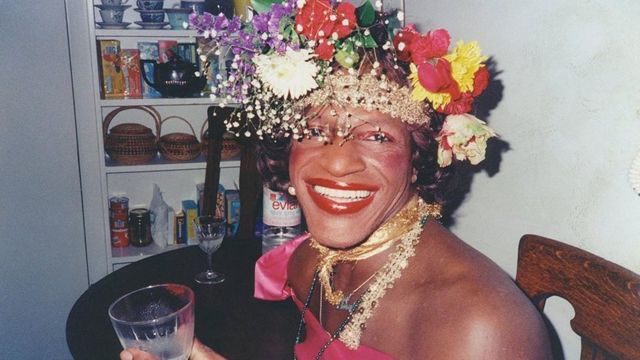Watch this article in American Sign Language.
On June 28, 1969, Marsha P. Johnson was credited with throwing the first brick to lead the Stonewall uprising in protest of the police brutality against LGBTQ+ people at the Stonewall Inn in New York City. The protest lasted six days, creating the catalyst for Pride month as we now know it – a celebration of the LGBTQ+ community’s hard-won rights within the U.S. At the WellPower, we proudly honor her legacy and celebrate her life with this special edition in our Black History is American History series.
Early Life
Marsha P. Johnson was born in 1945 in Elizabeth, New Jersey. She was raised in a devoutly religious household and discovered her trans identity at a young age, which caused conflict between her and her family. Once she graduated high school in 1963, she left home to live in New York. She only had $15 and a bag of clothing to her name.
At the beginning of her life in New York City, Johnson experienced homelessness and began engaging in sex work and performing in drag to survive. Her drag style was comedic, political and grassroots, with looks made from fresh flowers, flowing robes and red plastic high heels. Between her life experience as a gay, gender non-conforming person and her work, Johnson became active in social liberation movements for LGBTQ+ rights. She quickly became a fixture within the New York gay community.
Stonewall and Social Justice
The Stonewall Uprising solidified Johnson’s leadership in the gay-rights movement. Later in 1969, Johnson and friend, Sylvia Rivera, founded Street Transvestite* Action Revolutionaries (STAR) to advocate for and support young transgender people. Using the money she earned doing drag performances and sex work, she helped clothe, feed and house the people they helped.
Marsha P. Johnson’s Legacy Lives On
In the 1970s, Johnson began experiencing mental illness, which led to a series of breakdowns and stays in psychiatric hospitals. Even through her struggles with mental health challenges, her devoted work for STAR continued, helping to ensure trans youth had a safe haven within New York City.
On July 6, 1992, her body was found in the Hudson River. Her death was ruled a suicide, though many of her loved ones believe she was murdered.
According to the New York Times, “Later in 1992, the authorities reclassified the cause, to drowning from undetermined causes, and in 2012, they agreed to take a fresh look at the case, which officially remains open.” Marsha P. Johnson’s legacy lives on, though. She has become the subject of books, movies, art installations and non-profit work. Her activism kickstarted over 50 years of tireless work, leading the LGBTQ+ community towards equal rights within the United States.
We are proud to honor her as the sole subject of this month’s edition of Black History is American History.
Additional Resources
*Language evolves and changes over time. During the 1960s and 1970s, the term “transvestite” was commonly used to describe transgender people. Now, we use the adjective “transgender” or “trans” instead. For example, we say “James is a trans man” or “Skyler is a transgender woman.”


